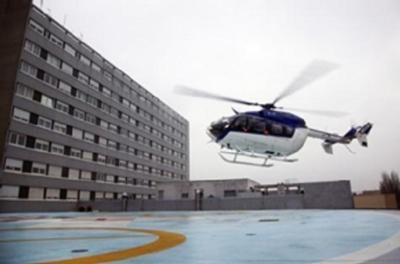Mon, Aug 26, 2013
Allows Instrument Approaches To Be Flown Using GNSS-SBAS
Air traffic is expected to grow continuously in the next decades. Reducing the environmental footprint of aviation has therefore become a major challenge for industry stakeholders, including rotorcraft operators. Working towards greener skies, the European Commission has created jointly with the aviation industry the Clean Sky Joint Undertaking. Its objective is to develop technologies that mitigate the impact of air transport on the environment (reduction of aircraft external noise, emissions and fuel consumption).

One of the initiatives launched by CleanSky JU in this perspective is the CARE project (Curved Applications for Rotorcraft Environmental enhancements). The project consists in developing new curved IFR procedures for rotorcraft using satellite-based augmentation systems (GNSS-SBAS).
For this two-year project CleanSky JU has selected a consortium led by Egis Avia and also formed by the French air navigation service provider (DGAC/DSNA), Pildo Consulting and CGX Aero. The consortium will provide support in the design and implementation of curved GNSS-SBAS IFR procedures for rotorcraft.
The first step of CARE consists in defining the criteria to design these procedures based on the specific characteristics of rotorcraft and also on the use of satellite-based positioning system (GNSS-SBAS). Secondly, the project team will identify the benefits brought by GNSS-SBAS guidance and the implementation of such procedures. Finally, the consortium will conduct a safety assessment of these operations and ensure their promotion towards the potential stakeholders.
These new curved trajectories are of major interest as they allow rotorcraft to avoid flying over noise sensitive urban areas, especially thanks to the use of high-precision GNSS-SBAS guidance for approaches and departures. Low noise procedures are a major green leap forward and they increasingly capture the interest of airports and operators as an effective solution for noise abatement in residential areas overflown by rotorcraft.
GNSS-SBAS guidance also enhances both the precision and the performance of rotorcraft navigation. In particular, curved procedures enable rotorcraft to operate under IFR in challenging environments such as mountainous areas and to fly safely steep approaches to airports or heliports that are difficult to access or located in densely populated areas. This is particularly important for medical air transport to city hospitals or for helicopter operations in the vicinity of airports without interfering with the surrounding fixed-wing aircraft traffic.
(Image provided by Egis Avia)
More News
An Amazing Experience Awaits The Chosen Few... Oshkosh, to us, seems the perfect place to get started on watching aviation recover the past couple of years... and so ANN is putting>[...]
“NBAA has a tremendous responsibility to the business aviation industry, and we are constantly collaborating with them. Our flight departments, professionals and aircraft own>[...]
Dead Reckoning Dead reckoning, as applied to flying, is the navigation of an airplane solely by means of computations based on airspeed, course, heading, wind direction, and speed,>[...]
Aero Linx: Vertical Aviation Safety Team (VAST) We are a public–private initiative to enhance worldwide flight operations safety in all segments of the vertical flight indust>[...]
We're Everywhere... Thanks To You! Even with the vast resources and incredibly far-reaching scope of the Aero-News Network, every now and then a story that should be reported on sl>[...]
 ANNouncement: Now Accepting Applications For Oshkosh 2024 Stringers!!!
ANNouncement: Now Accepting Applications For Oshkosh 2024 Stringers!!! Aero-News: Quote of the Day (06.13.24)
Aero-News: Quote of the Day (06.13.24) ANN's Daily Aero-Term (06.13.24): Dead Reckoning
ANN's Daily Aero-Term (06.13.24): Dead Reckoning ANN's Daily Aero-Linx (06.13.24)
ANN's Daily Aero-Linx (06.13.24) ANN FAQ: How Do I Become A News Spy?
ANN FAQ: How Do I Become A News Spy?



